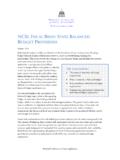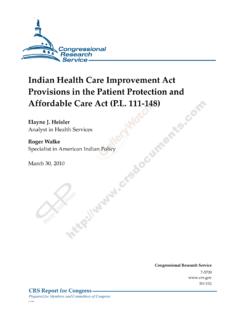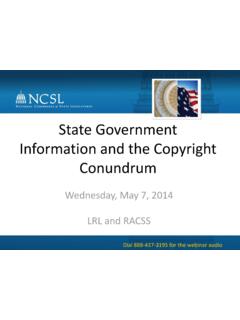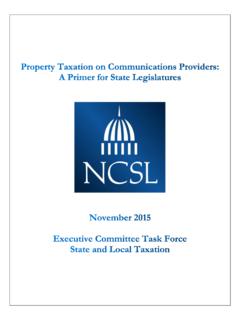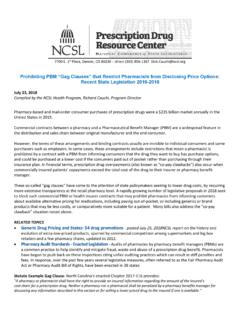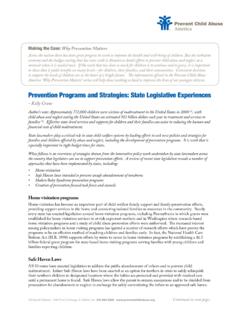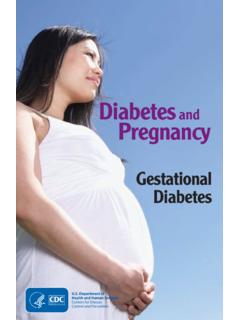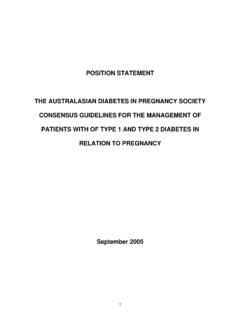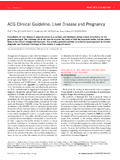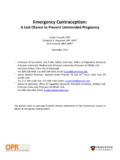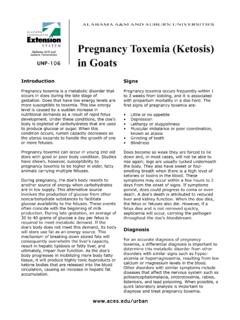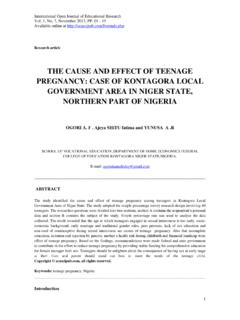Transcription of Teen Pregnancy Prevention - National Conference …
1 Making a Difference for At-Risk PopulationsTeen Pregnancy Prevention Teen Pregnancy Prevention efforts, particularly for high-risk youth, are most effective if they are part of a youth development framework that addresses multiple risk factors. Healthy development for adolescents is related to family support, positive peer influences, effective education, safe schools and communities, and an array of other issues. Positive youth development programs which promote healthy development for youth through greater community and adult support address the full range of risks young people face and can best prevent unplanned pregnancies, involvement with the criminal justice system, or dropping out of school. This brief outlines disparities in teen Pregnancy and birth rates, identifies teen populations at high risk for Pregnancy , and examines Prevention programs that target these populations. Aiming Pregnancy Prevention efforts at high-risk groups can allow policymakers to more effectively address teen Pregnancy and problems stemming from it.
2 Disparities in Teen Pregnancy and Birth Rates Teen Pregnancy and birth rates in the United states have declined since 1991. teen Pregnancy and birth rates are the highest of any western industrialized nation, however, and 2006 data indicate rates may again be Further, a much steeper decline has occurred in teen Pregnancy and birth rates among some demographics. Latina teens are one population with high rates of teen Pregnancy , and evidence indicates that teens in foster care and those with a gang affiliation also are at increased risk for Pregnancy . Although current Prevention efforts effectively reduced the overall number of youth who have sex and increased the number of youth who use contraceptive and other Prevention methods, unique cultural and economic characteristics of these youth may not be addressed in existing programming, which could contribute to high rates of teen The detrimental effects of teen births on both teen parents and their children are well-documented.
3 Teen mothers and their children have less education, are more likely to be in poor health, and are more likely to rely on public assistance. In addition, teen Pregnancy cost taxpayers nearly $ billion in Clearly, the importance of preventing teen Pregnancy should be emphasized to all teens in an accessible way. Failure to address the disparities in Pregnancy rates among teen populations in a cost-effective and culturally relevant way hinders progress toward reducing teen Pregnancy and could negate the progress made during the past few decades. In fact, according to data released by the Centers for Disease Control in December 2007, in 2006 the nation experienced the first increase in teen Pregnancy and birth rates since 1991. Although the highest birth rate increase was among African-American teenagers (5 percent), birth rates among white and Hispanic teens also increased (3 percent and 2 percent, respectively). Hispanic teens experienced the smallest rate increase among the populations surveyed, although they have the highest teen birth rate.
4 The Hispanic teen birth rate is 83 per 1,000 teens nearly twice the National teen birth rate of compared to for African-American teens and for white More than half of American Latinas will have at least one Pregnancy before they reach age prevent the recent spike in teen birth rates from becoming a sustained trend, Prevention efforts must target those groups with the most room for improvement Hispanic and Latino/a are used interchangeably in this paper according to the source material. Generally, Hispanic is used by government agencies to refer to those from a Spanish-speaking country, and Latino/a is used by independent researchers and nonprofit organizations to refer to anyone from Mexico, the Caribbean, Central America or South America. National Conference of State Legislatures2and that research indicates are at an increased risk for teen Pregnancy . Some progress has been made toward identifying at-risk populations and developing programs that address their specific needs, but more remains to be done.
5 Identifying At-Risk TeensLatina TeensRace and socioeconomic issues play a role in the wide variation between racial groups in adolescent Pregnancy rates. Latina teens have experienced the smallest decline in teen Pregnancy and birth rates during the past few decades; they currently have the highest teen birth rate of any racial/ethnic When the teen Pregnancy rate of women ages 15 to 19 plummeted across the nation between 1990 and 2002, there was a 40 percent decrease for African-American teenagers and a 34 percent decrease for white teenagers, but only a 19 percent dip for Hispanic The recent increase in teen Pregnancy and birth rates in 2006 indicated that African-American teens were times more likely and Hispanics were times more likely than their white peers to become teen Research suggests that current teen Pregnancy Prevention programming generally is not culturally sensitive,9 and that Latina teens are over-represented in the recent increase in the teen birth rate because they are not benefiting from current Prevention Teen birth rates also vary among Latina subgroups Latina teens represent diverse geographic and cultural backgrounds (see Figure 1).
6 11 Country of origin, immigrant generation, language, and type of household are factors that can affect Latina youth and their sexual behavior. Research has shown that family-centered intervention programs that focus on improving family dynamics can effectively reduce high-risk behavior among Hispanic teens with Gang Affiliations Recent research conducted in a predominantly Latino San Francisco neighborhood indicates that teenage girls whose boyfriends are in a gang are twice as likely to become pregnant as their The study found no increased Pregnancy risk for girls in gangs, and the researchers suggest that the difference is based on cultural and economic factors. Young women with gang-involved partners may feel social pressure to have a baby to increase their status within a relationship and see sexual decision-making including Pregnancy and condom use as up to The researchers contend that integrating reproductive health education with violence Prevention efforts is crucial to intervention methods for this teens in Foster CareTeen Pregnancy Prevention programs tend to emphasize parental involvement and improve family dynamics, but at least one high-risk teen population those in foster care does not benefit from this type of intervention.
7 The presence of a biological relative or any engaged adult can be a deterrent to high-risk behaviors. Teen girls who live with non-parent relatives begin having intercourse at a younger age than those who have always lived with at least one biological One study found that almost one-third of girls in foster care become pregnant at least once by age The transition from the foster care system to independent living aging out of the system is a crucial intervention point. states can provide more stability and a support network for these foster youth by offering job placement assistance, housing vouchers and educational 1. Teen Birth Rates Among Latina SubgroupsSource: The National Campaign to Prevent Teen Pregnancy , Bridging Two Worlds: How Teen Pregnancy Programs Can Better Serve Latino Youth, per 1,000 girls, ages 15 to 19, 2003 All LatinasMexicanDescentPuerto RicanDescentOther/UnknownDescent3 National Conference of State LegislaturesTeen Pregnancy Prevention Programs in the Private and Public SectorsWhat Is the Federal Government Doing?
8 The federal government provides funding for general teen Pregnancy Prevention through various agencies and Medicaid and SCHIP funds cover pre- and post-natal health care for teen mothers and their children. Medicaid also covers family planning services including physical exams, laboratory tests, counseling and education, and contraception although state service and provider coverage varies. Family planning services are extended to additional higher-income populations in 20 states that use Section 1115 waivers to do so. states have wide latitude with their use of Temporary Assistance for Needy Families (TANF) funding, some of which is used for education programs and other social services. Title V Section 510 funding supports abstinence-only sex education provided by the state or independent organizations. Title X Family Planning funding provides federal grant money to family planning service providers for physical exams, laboratory tests, counseling and education, and contraception, but they cannot be used in programs that provide abortions.
9 Title X funds also are used to train clinical personnel to ensure the quality of family planning advocates support increased funding for these programs because current funding levels especially for Title X programs have stagnated. The budget allocation for Title X increased to $300 million for FY 2008, after stalling at $283 million for two If program funding had merely kept pace with inflation since 1980, the 2008 budget allocation would be more than $700 Advocates emphasize that Title X programs generally provide a return on investment of almost $4 for every $1 The Guttmacher Institute estimates that doubling Title X spending would help avert some 243,750 unplanned pregnancies annually across all age groups , some Prevention advocates oppose use of public funding to support teens who already have become parents, arguing that such programs limit use of the funds for Pregnancy Others oppose use of public funding for abstinence-only sex education on a similar basis, due to concerns over comparative cost-effectiveness.
10 The Prevention First Act ( ), introduced in 2008 by Senator Harry Reid and cosponsored by then-Senator Barack Obama, would provide additional funding for a broader array of Pregnancy Prevention education programs. Title V of this bill would give funding priority to teen Pregnancy Prevention programs for at-risk teen populations with higher than average or increasing rates of teen Pregnancy and underserved populations such as young males or immigrant youths. The legislation also encourages innovation and coordination with positive youth development programs such as workforce development and after-school programs. Until this or similar federal legislation is passed, states have some flexibility in determining which programs to fund and are increasingly using funds to address the at-risk teen populations described below. State and Local Programming for Latino and Latina TeensDuring the past few decades, California has seen one of the most drastic reductions in its overall teen Pregnancy and birth The disparity across the state is just as drastic as in the rest of the nation, however; California Latina teens are four times as likely to become pregnant as their white peers.
